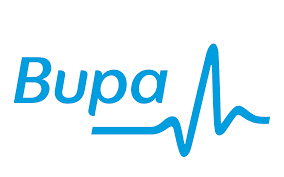Have you ever heard of someone having a lymphatic drainage massage? Do you know what lymphatic drain massage is? If you’ve answered no (or even yes), then you’ve come to the right place.
In this article, we’ll take a look at what lymphatic massage is, how it’s done and the benefits from this type of massage.
What is Lymphatic Drainage Massage?
This is a form of massage that is gentle and is used to encourage the movement of lymph fluids in the body. The lymphatic system removes wastes and toxins produced in body tissues. The fluid is moved from the cells to the lymph system, which is comprised of nodes, ducts and vessels to help remove the fluid. The lymph system is also responsible for distributing fat and fat-soluble vitamins from the digestive system, moving white blood cells to help treat infections, and helps remove fluid that causes swelling.
The lymph system is not run with the heart or any other “pump.” Instead, the system relies on our daily activities to keep fluids moving. However, with the lack of exercise, stress, and a sedentary lifestyle, the lymph system is sometimes unable to work correctly. There are also medical conditions and genetics that keep the lymph system from working as it should, which leads to blockages and build-ups along the system’s network. This can soon result in a condition called lymphedema.
What is Lymphedema?
This can be a serious medical condition that can lead to pain, swelling, lethargy, burning sensations, leaking of fluid and even bruises. If the condition is not treated, it can lead to infections, skin damage, and loss of movement in toes and fingers.
Sometimes surgery can also cause the development of lymphedema. Parasites can be another cause of this painful condition. However, one of the most common causes of lymphedema is cancer treatment. This may include radiation or chemotherapy. Surgeries for cancer, such as mastectomies, which requires the remove of one or more lymph nodes can also disrupt the lymph system, and cause lymphedema.
Sometimes pressure sleeves, compression bandages and special clothing are used to remove swelling and improve the movement of lymph fluid. However, there are times when these methods are not as effective, and lymphatic massage may be needed.
What is Lymphatic Massage?
This type of massage should not be confused with other types of massage that use a heavy touch. Instead, lymphatic massage uses a gentle touch to help move and drain fluids, while removing blockages and build-ups of fluid. The massage works to improve and stimulate the entire lymph system including the vessels and passages that carry lymph fluid and remove it from the body.
Lymphatic massage therapy is usually conducted by a specially trained and certified healthcare professional. These include Lymphedema therapists, physical therapists, or massage therapists.
How Does Lymphatic Drainage Massage Work?
This type of massage uses long, rhythmic strokes that run in the direction of the lymph nodes. The pressure is light because lymphatic vessels are found just beneath the skin. While this type of massage is usually done manually, there are some devices that can help stimulate the lymph system.
In some cases, patients may also be taught to give themselves a lymphatic massage. This can be important after surgery and goal is to minimise pressure and swelling. Family and caregivers can also be taught how to perform lymphatic massage to help their loved one. This can help in between visits to a certified therapist.
Who Can Benefit from Lymphatic Drainage Massage?
This type of therapy can help people who have one of the following conditions:
- Lymphedema
- Fibromyalgia
- Swelling or edema
- Skin disorders
- Lethargy
- Insomnia
- Stress
- Digestive issues
- Migraines
- Arthritis
In addition, lymphatic drainage massage can also be beneficial for those who have a sports injury, any time tissues are swollen or blocked, and more.
Those who have received lymphatic drainage massage say they feel increased energy levels and that they feel less bloated. In addition, the immune system may become stronger, and skin can appear fresh and healthy due to the release and removal of toxins from the system.
Side Effects and Precautions
Lymphatic drainage massage should be avoided by anyone who has these problems:
- Congestive heart failure
- Inflammation or infection of the lymph nodes/vessels
- Increased risk of blood clotting
- Skin infection
Possible side effects of lymphatic drainage massage can include:
- Increased urination/bowel movements: after the massage, the lymph waste will need to be removed from the body. This leads to an increase in urination and bowel movements, as these are the methods the body uses to eliminate lymph waste from the body.
- Headache/sore muscles: while the massage is gentle, it can lead to muscles releasing tension and toxins, which can cause headaches and soreness.
- Emotional sensitivity: has been reported by some patients and is completely normal. The lymphatic drainage massage is a healing therapy, which can sometimes feel overwhelming. Along with emotional sensitivity, it’s also common to become hungry and thirsty after the treatment.
- Fatigue: as the massage is relaxing, this can lead to fatigue, which is also a natural reaction to this therapy.
- Skin breakouts: are also common due to the lotions or oils used during the massage.
As you can see, lymphatic drainage massage can have some wonderful effects on your body. Not only can this therapy relieve lymphedema, it can also help a number of other conditions.
Before receiving this type of treatment, it’s always a good idea to check with your healthcare provider. They will be able to tell you whether or not this treatment will be beneficial for you and your health. There are times when a doctor may recommend exercise and compression therapies before lymphatic drainage massage.
If you need to have this type of therapy, be sure to find a qualified healthcare therapist who has been trained to offer this service. These include some nurses, doctors, physical therapists, and massage therapists.





